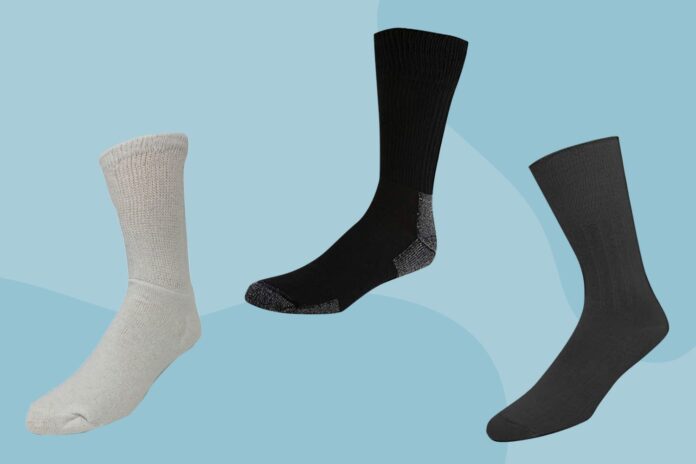Diabetes, a complex condition affecting millions worldwide, brings with it various complications. Among these, foot care emerges as a significant concern. It’s not just about daily comfort but about preventing serious complications.
Our feet, nestled snugly in shoes, might be out of sight, but for a diabetic, they should never be out of mind. The very nature of diabetes often results in decreased blood flow and reduced sensitivity in the feet. This means minor cuts, scrapes, or even the friction from poorly-fitted socks can escalate into severe problems.
Enter the humble sock, an often overlooked yet pivotal player in the game of foot health. For the general population, sock selection might be about fashion, warmth, or even a bit of whimsy. But for a diabetic, the right sock can serve as a protective barrier, helping to maintain the foot’s overall health and hygiene.
Understanding Diabetic Foot Complications
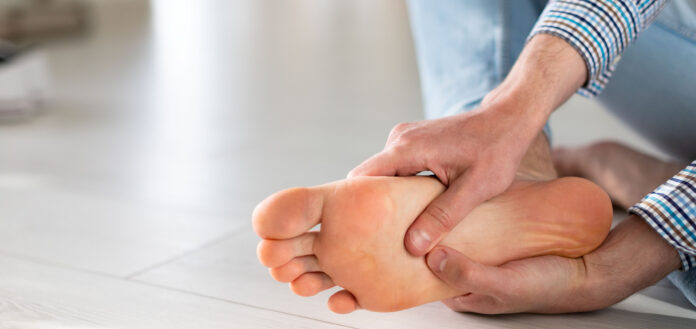
The diabetic foot is a landscape filled with potential pitfalls. Prolonged high blood sugar levels can damage nerves, leading to neuropathy. This nerve damage often results in a diminished ability to feel pain, heat, or cold. Without these early warning systems, minor injuries might go unnoticed and untreated.
Beyond neuropathy, diabetes also compromises blood circulation. Poor blood flow makes it harder for these injuries to heal, elevating the risk of infections. And as if that wasn’t challenging enough, the immunity system of someone with diabetes is often less equipped to combat these infections.
Therefore, prevention emerges as the cornerstone of diabetic foot care. Before the first sign of a blister, before the inception of a wound, preventative measures, like choosing the right socks, become paramount.
One of important preventive measures in diabotic foot care is tennis socks. Tennis socks are often designed to provide comfort, support, and moisture-wicking properties, which can be beneficial for individuals with diabetes in managing their foot health.
Why Socks Matter for Diabetics
When one imagines diabetes care, visions of insulin injections, dietary restrictions, and blood glucose monitors might dominate the scene. Yet, how often do men’s diabetic socks feature in this picture? Their role, subtle yet vital, is intricately woven into the fabric of comprehensive diabetic care.
A sock’s primary function, beyond warmth, is to act as a buffer between the foot and the external environment. For a diabetic, this buffer effect is crucial. A well-chosen sock can minimize friction, wick away moisture (a breeding ground for infections), and even distribute pressure more evenly across the foot, reducing the risk of ulcers.
Moreover, the right sock can aid in circulation. While regular socks might have tight elastic bands that can impede blood flow, diabetic socks are often designed with non-binding tops, ensuring that they stay up without constricting the foot.
Key Features of Diabetic-Friendly Socks
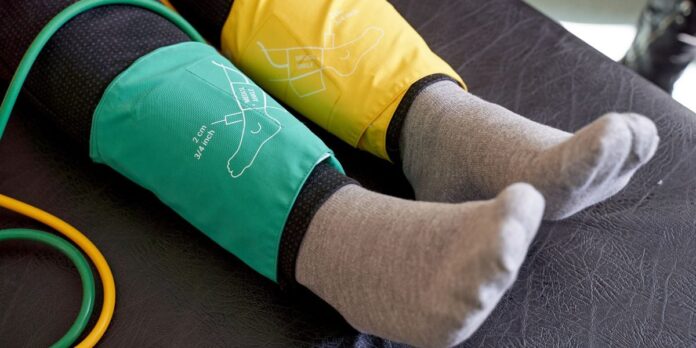
Choosing a sock might sound simple, but when diabetes enters the equation, specific features elevate a sock from a mere accessory to an essential foot-health tool.
Seamless Toes: Traditional socks usually have seams that can rub against the skin, leading to blisters or ulcers. Diabetic-friendly socks often boast a seamless design, minimizing potential points of friction.
Non-binding Tops: Circulation plays a critical role in diabetic foot health. Diabetic socks are crafted with non-binding tops, ensuring they don’t constrict the foot or leg, promoting better blood flow.
Cushioning: Strategic cushioning, particularly in the sole, can offer additional comfort and protect the foot from potential injuries. This cushioning transforms everyday activities, turning them into more comfortable experiences.
These features collectively create an environment conducive to foot health, crucial for diabetics.
Materials Matter: Choosing the Right Fabric
The fabric of a sock is its essence, dictating comfort, durability, and functionality.
Cotton: Renowned for its softness and comfort, cotton is a classic choice. However, it tends to retain moisture, which could be problematic for diabetics.
Moisture-Wicking Materials: These synthetic fibers, designed with technology, draw moisture away from the skin, keeping the foot dry and reducing the risk of fungal infections.
Bamboo: Bamboo fibers are naturally antibacterial and incredibly soft. They also offer moisture-wicking properties, making them an excellent choice for diabetics.
Understanding the nuances of these materials can guide an individual in making a choice that marries comfort with health benefits.
Sock Thickness and Comfort
Thickness affects warmth, cushioning, and overall comfort. A thicker sock can offer more cushioning but might be warmer, potentially leading to increased sweating. On the flip side, a thin sock might not offer sufficient protection. The key lies in balancing the need for protection with the individual’s natural body temperature and activities.
Safety First: Preventing Foot Ulcers
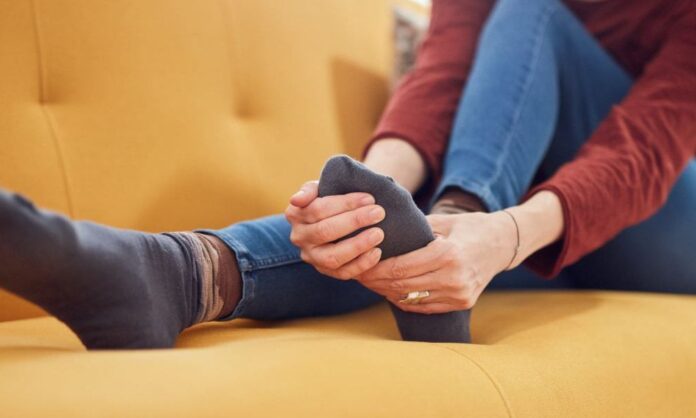
Foot ulcers, open sores that don’t heal or keep returning, can be a common complication for diabetics. The friction from ill-fitting shoes or socks can escalate into ulcers. The right sock minimizes these friction points, wicks away moisture, and promotes circulation, all crucial steps in preventing foot ulcers.
Style and Aesthetics for Diabetic Socks
Gone are the days when medical necessities meant sacrificing style. Modern diabetic socks come in a range of designs and colors, catering to the fashion-forward individual. Whether it’s a bright pattern or a classic neutral, there’s likely a diabetic sock to suit every style preference.
Choosing the Right Size
Proper fit is paramount. Too tight, and you risk impeding circulation; too loose, and you introduce friction points. It’s essential to measure the foot and refer to sizing charts specific to brands. With potential swelling in mind, choosing a sock that accommodates these changes can make all the difference.
Caring for Your Diabetic Socks
Just like any other clothing item, diabetic socks require care:
Washing: Use mild detergents and avoid bleach. Always turn them inside out to maintain their shape and functionality.
Drying: Air-drying is ideal. If you must use a dryer, opt for a low heat setting to prevent shrinking.
Inspection: Regularly check for signs of wear or holes, ensuring they continue to offer maximum protection.
Proper care not only elongates the sock’s life but also ensures it offers consistent protection.
Conclusion: Prioritizing Foot Health
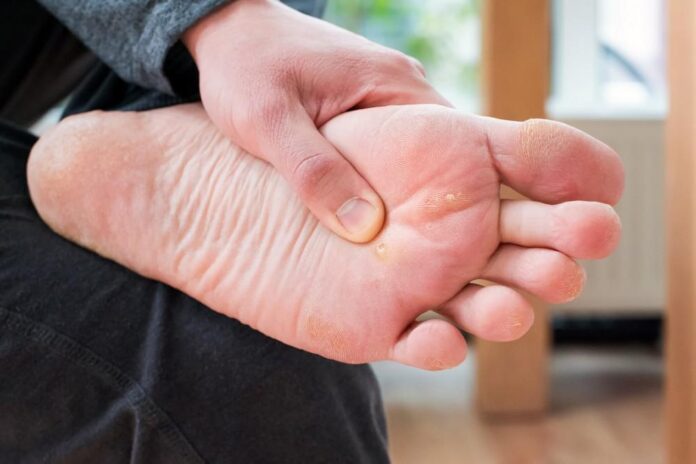
In the vast world of diabetes management, foot care often doesn’t get the limelight it deserves. As we’ve seen, selecting the right sock isn’t just about comfort; it’s an essential step in preventing complications and promoting overall well-being.
From understanding foot complications to navigating the myriad of sock options available, making an informed choice can be life-changing. It’s a testament to the saying, “take care of your feet, and they’ll take care of you.” Prioritize foot health, embrace the blend of style, comfort, and safety, and walk the journey of life with confidence.

